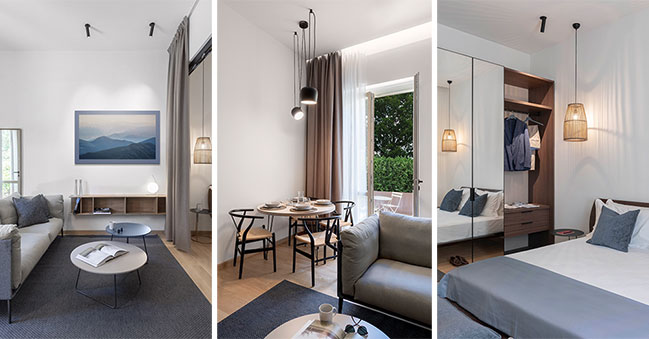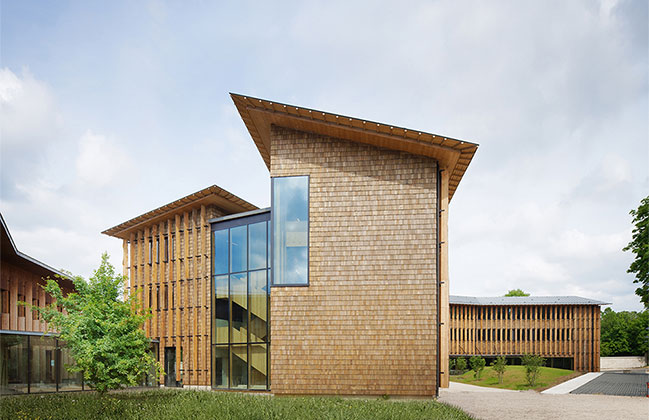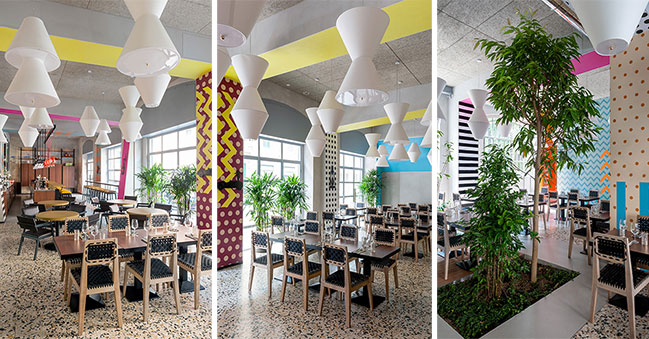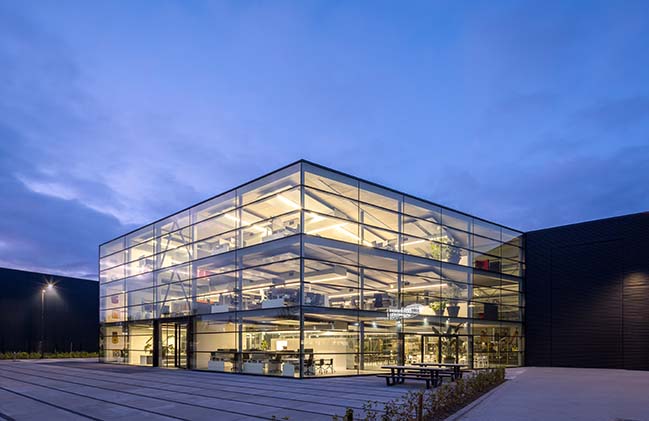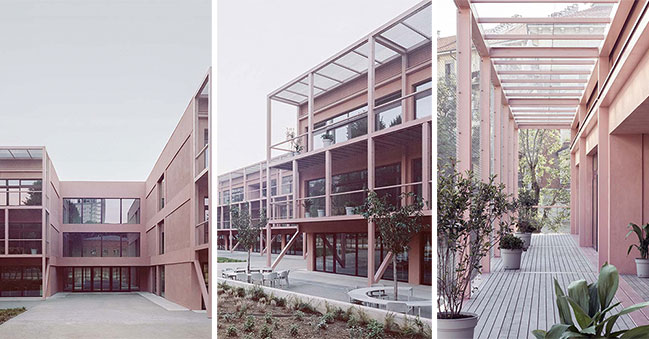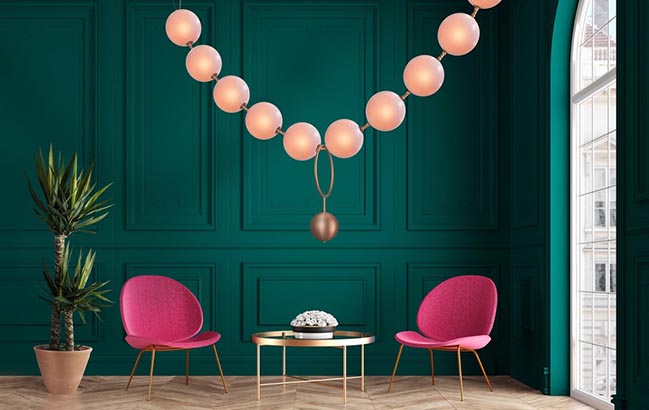09 / 29
2019
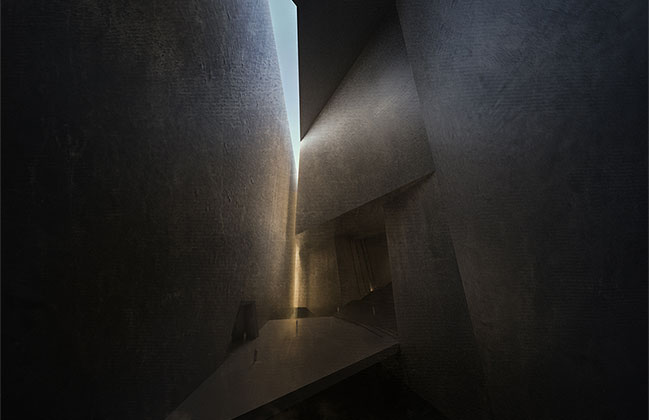
Architects: Matteo Cainer Architecture
Location: Hwangnyoengsan Yeonje-gu, Busan, South Korea
Size: Inferno: 4,330 m2, Purgatorio: 4,310 m2, Paradiso: 8,630 m2 - Site area: 134,663 m2
MCA Team: Vasiliki Mavrikaki, Daniella Persson, Caterina Cicognani, Barbara Stefan, Francesco Messina and Teresa Cancellari
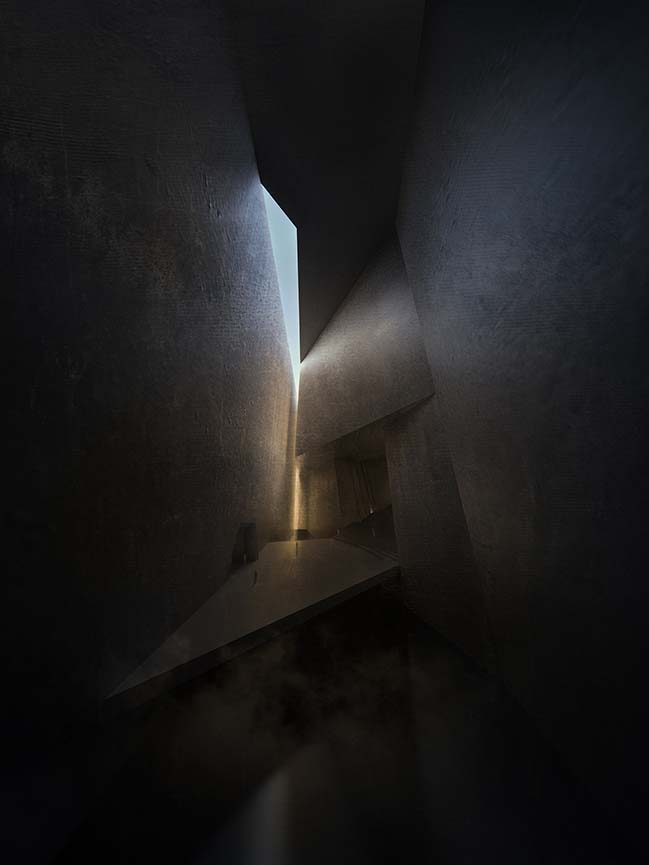
From the architect: In Mulmangol, a small town sitting at the foothills of Hwangnyoengsan Mountain in Busan, South Korea, there is a unique urban site, an underground bunker facility, part of which existed since the Japanese colonial era, and the rest constructed in 1968 as a military operations facility. Neglected for the past several decades and registered as a structure for storage, it is now the object of an urban regeneration project. This presented itself as the perfect opportunity to test and strategically challenge what we believe to be a rampant social issue. What we are proposing is to transform this exceptional site into an unconventional ‘machine’ for social repair and cathartic selfintrospection. Not only are we technologically upgrading the bunker by creatively reconfiguring and redefining it, but through an unorthodox architecture programme, challenging visitors to engage and question their civility, social empathy and perceptions, by interrogating their behaviour and role as individuals within the community and more importantly in relation to each other and to the surrounding environment.
The control of information has always been the key to power, and with the evolution of information technology, this is the case more than ever. Today there is not only an ‘overload’ of information, and public opinion is easily swayed and strategically manipulated through this crushing flow, but social networking sites use constructed images of false subjectivity and fabricated objectivity to feed consumers a simulacrum of their own feelings as if deeply personal and inescapably true. The result is a proliferating obsession with technology, consumption and a focus on the image rather than the essence. Our online culture has promoted meaningfulness in terms of online fame and numbers of likes and viewers, rather than time spent building face-to-face personal relationships. With this in mind, the early critiques of Austrian architect and sculptor Walter Pichler are remarkably poignant, as he anticipated, instead of augmenting human abilities, certain technological advancements in media and information have disabled users from moving with their usual acuity and awareness!
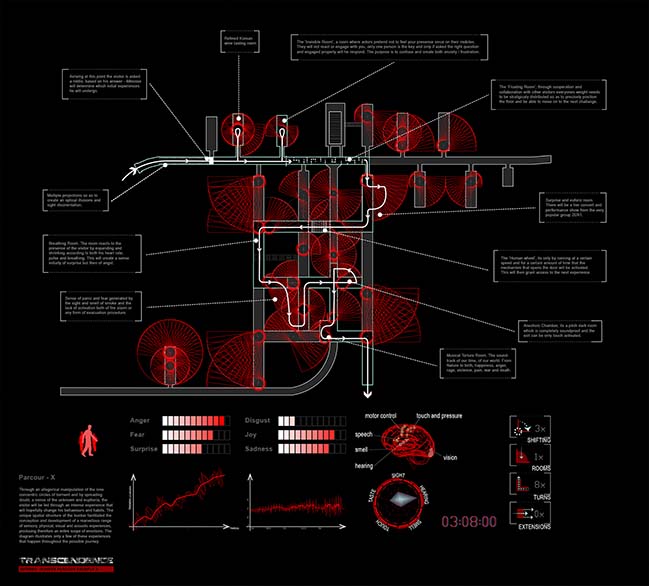
These behaviours raise serious questions on ethics and citizenship, forcing us once again to explore, discuss and critically engage with our mode of cultural existence. We need to redefine the impact and role both of media and of information technology since the increasing use not only has significantly affected economic and social processes but has drastically and dramatically changed the relationship amongst humans and their environment. The idea of greater social well-being has all but disappeared with the development of a self-centred society. The increased focus on individual promotion has significantly diminished socio-emotional engagement and activities that promote physical, mental and social health. The result is a startling rise of unknown and undesirable psychosocial outcomes that are starting to push reality in a different direction.
The choice to implement the project in Busan was not only driven by the site characteristics but specifically because South Korea is currently the country with the highest percentage of its population connected to digital devices (97%). Furthermore, the population has been deemed by the government as infested with ‘internet addiction’ since one in ten teenagers are now addicted to gaming so much so that they can no longer distinguish the real and the virtual world. The suicide rates are the second worldwide and only 0.7% of the population that suffers from depression is being cured, all due to their fear of impacting their social status. Currently labelled as a national crisis, the government has decided to fund and create rehab digital addiction centres in various South Korean cities.
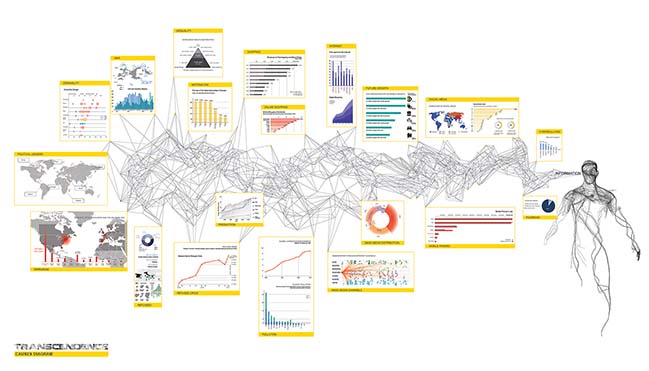
Our speculative research project dares the visitor to defy and ‘break free/detach’ from the ‘connected’ world, so as to undergo a form of cleansing or transcendence: one of therapeutic introspection, fostering not only a renewed appreciation of one’s social and human existence, but empowering each individual to take control of their future being. A conceptual reinterpretation of Walter Pichler’s work: a subtraction of connectivity to adopt a more experiential and engaging existence. As Pichler foresaw ‘if one lets media or technology more in general, isolate and insulate, it will be to the detriment of other abilities’. Our project creates a spiritual and physical journey that aims at liberating visitors by reconnecting them with their mind/soul, body/senses and with nature and its elements. To achieve this we have decided to approach the project from three different angles, as phases or events. Inspiration comes from Dante Alighieri’s epic poem The Divine Comedy and its tri-partition. Similarly, our project is conceptually divided into: The Game/Inferno, The Void/Purgatorio and The Light/Paradiso. This concept is the ‘fil rouge’ for the entire project as it evolves and develops across the slopes of Hwangnyoengsan Mountain.
The idea is that the project will trigger and activate subconsciously a renewed personal civic character in the individual through intense emotional experiences and different collective and personal challenges. If Cedric Price’s visionary thinking for the Fun Palace contributed to the development of new philosophies about architecture, time and space, then Transcendence incorporates these to establish a dynamic space that forms and is informed by the ever-changing complex social, economic and cultural changes of today's society. The aim is to restore a more inclusive social agenda that reaffirms the importance of human interactions/ relations, together with the beauty of the real and natural world.
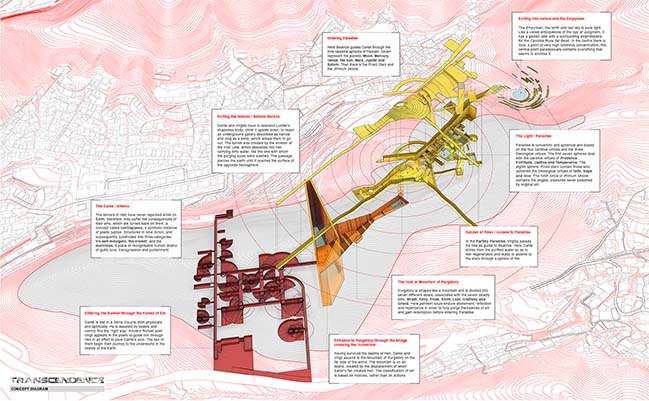
The Game / Inferno - The ancient Labyrinth represents humankind’s search for the core of Divinity. The fear of getting lost is mixed with the challenge of exploration; in this sense, both the Maze and the Labyrinth represent a journey to our own centre and back out into the world. The notion of an architecture of movement has always remained problematic given the immobility of typically built environments, however, the aim here is to change this and make movement an integral element of the architecture of the place. For this reason, we have conceived the bunker as the first challenge or ‘level’ and designed it as a cyber-prosthetic architecture or interactive mechanical maze, one that shifts and mutates not only to disorient but to specifically respond to each occupant’s physical and emotional reactions.
The idea is to create a new and engaging experience, one that is immersive and awakening for all the senses, while also physically challenging the user. The bunker is embedded with technology so as to tactically respond to and anticipate the visitor, adapting and transforming according to his reactions by alternating between opposite poles of tension and resolution. Consequently, it is conceived as an unstable/unpredictable series of systems, in continual transformation, permanently reorganizing and rearranging itself through processes of rotation, expansion, retraction and closure, all the while maintaining a cohesive structural system. The bunker has an indefinite number of combinations and permutations so that each experience is specifically tailored to each single user.
As a design principle, we tried to create a tension wave through a wide range of experiences, since it has been proven that experiences of tension are ubiquitous phenomena which occur in a variety of different contexts and which can evoke strong emotions and significantly influence people's future actions and behaviours. These mechanical transformations are associated with and in reaction to specific changes in physiological conditions such as heart rate, blood pressure, respiration frequency, skin conductance, body temperature, all data that is transmitted via a bracelet (Virgilio) into the main computer (Minosse). The aim is to monitor individual movements and physical reactions to create specific experiences that maintain the tension wave and create a ‘mind blowing’ experience. The unique spatial structure of the bunker was the perfect setting for Dante’s Inferno: the lack of sky, the reverberating acoustical arrangement and its interior constant temperature of 12.9 degrees facilitated the conception and development of a marvellous range of sensory, physical, visual and acoustic experiences, producing a scope of emotions including doubt, anxiety, sadness, joy, fear, euphoria, love, anger, compassion, frustration and happiness. Through an allegorical manipulation of the nine concentric circles of torment and by spreading doubt, a sense of the unknown and unexpected euphoria, the visitor will hopefully be led through a purgative experience that will influence his future behaviours and habits. The new bunker will initially deprive visitors of a sense of freedom so as to change or invert their perspective and potentially establish a new ‘freed’ identity. From this extremely physically and mentally challenging experience, as a partially renewed being, they will step into the Void or Purgatorio.
The Void / Purgatorio - The space has been designed as a form of ‘silent release’. Through a gate, you will step into a primitive space, a monumental void kissed by natural light conveying a sense of peace and tranquillity yet of rupture and transition. As in Dante’s poem, visitors have to cross the ‘Acherone’ river to then slowly climb the Mountain of Purgatory, a massive stairway with seven terraces, each referring to the seven purges of the soul. Architecturally designed as a cut in the mountain, it is a simple yet compelling sequence of geometries which have a grounded relation with the passing of time through light, sound, water and air. Inspired by Claude Parent and Paul Virilio’s, fonction oblique aesthetics, Purgatory will establish a new awareness based on instability and imbalance, as the oblique generated a new ground where continuity and separation were reconciled, here man will have to re-think and reconcile with his existence while immersed in the sounds of earth and its elements. The experience is geared more on psychological aspects since it is based more on motives, rather than on actions, similarly to Dante’s Purgatory. To further impart and create a proactive consciousness, on the surfaces of Purgatory there are carved depictions of our society’s evolving and pressing economic, social and political issues, what Dante calls: love towards improper ends (Wrath, Envy, Pride, Sloth, Lust, Gluttony and Greed), which translates in our modern day to: human rights/trafficking, drugs, overconsumption, globalization, technology, and global warming /pollution of our environment. Halfway, as in Dante’s poem, there is a place to rest and meditate both on our cultural existence and on one’s actions and their immediate and long term consequences. Visitors can ponder on the true human internal voyage and elaborate on one’s mortal existence. At the end of the stairs, they will reach the Earthly paradise/Garden of Eden, a place surrounded by nature and water. Access to the ‘Paradiso’ happens through an ascending platform initially immersed under water that then slowly emerges and ‘levitates’ so as to disappears into the sky of Purgatory, giving visitors access to Paradise.
Light / Paradiso - Once in Paradise, an ethereally lit space created similarly to the nine levels of the Angelic hierarchy and born in and around Light, visitors will reconnect both with their inner existence and with the surrounding nature/environment. Through intersecting sensorial, cultural and educational experiences, visitors will be slowly guided to rediscover and share/reunite with each other and with the natural elements, creating a renewed and revitalized set of norms and rituals of social interaction. To achieve this, concentric circular and organically designed paths weave together nature, art, culture, wellness and collaborative spaces. Conceptually inspired by Dante’s Paradiso and Yona Friedman’s Spatial City, Paradise has been designed on the principles of nature, an architecture capable of understanding, and reconfiguring itself based on human needs and interactions, so as to offer a transhumanizing experience, one of overcoming what is human and earthly so as to approach a more intellectual, cultural and illuminated version of oneself. The sequence of spaces aims to dynamically heal and restore the mind, body and soul. Articulated as a breathing city, it features a natural/ecological wellness and meditation centre designed both planimetrically and conceptually to relate to the paradise planets of: Moon, Mercury, Venus, the Sun, Mars, Jupiter and Saturn. Connecting paths are carved in the mountain allegorically relating to the fixed stars and the premium mobile skies, so as to create a symphony of experiences that will once again unite the visitor to our natural ecosystem. While being sensually charmed by musical performances, creative whispers, visitors will slowly be led out into the ‘Light’ and the Empyrean, the tenth and last sky in the Divine Comedy depicted as pure light. The latter will emerge as a minimal sign on the landscape echoing land art as if engraved in the mountain. Visitors will walk out into this natural amphitheatre around a lake, where nature and people intertwine in renewed harmony.
Marketed as the ultimate journey/game, it has been reverse engineered to offer the possibility of a deep metamorphosis, one where the importance does not lay just in the experience but more in how each individual interprets and understands their ‘journey’. A machine for social evolution/reeducation, one that initially might present an Orwellian scenario but that effectively has the true potential to reshape one’s future identity. By restoring natural awareness, fighting digital dementia, fostering interior fulfilment, and through a deep understanding of our social existence, technology, and our relation to nature, it will foster a more constructive consciousness within the delicate ecosystem. As Heidegger writes, ‘Everywhere we remain unfree and chained to technology, whether we passionately affirm or deny it, but we are delivered over to it in the worst possible way when we regard it as something neutral’.
Transcendence 3.0 by Matteo Cainer Architecture
09 / 29 / 2019 In Mulmangol, a small town sitting at the foothills of Hwangnyoengsan Mountain in Busan, South Korea, there is a unique urban site, an underground bunker facility
You might also like:
Recommended post: Larose Guyon unveil a unique luminaire fusion of jewellery and light
